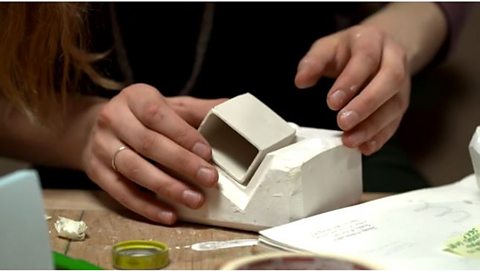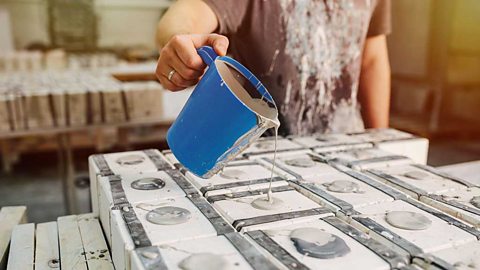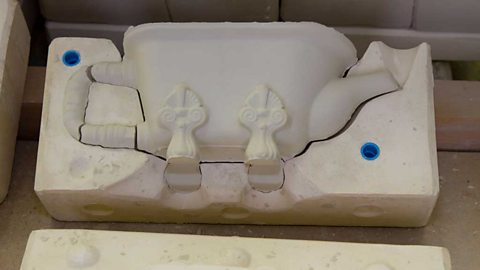Slip casting

Slip is a liquid mix of clay, water and sometimes other materials, such as pigment.
A mould is made by attaching a frame around an object and pouring plaster over it. A thin layer of grease, such as soft soap, has to be applied first to prevent any sticking.
When the mould is dry, the original object is removed. The mould then needs to be left until it is dry.
The mould is held together using strong, gripping bands. A pouring hole is created during the mould-making stage to allow the slip to be poured in.

Liquid clay is poured into the mould
The plaster mould will absorb much of the water from the slip, leaving a clay powder that coats the inside surface. When enough time has passed, the excess slip is tipped out.

The mould is opened to reveal a three-dimensional form. seamlineA visible line on a surface where you can see that two or more pieces have been attached together where the moulds attached together can be scraped away before the object is ready for firing.
A mould can be reused. This process is used to mass producedAn item made in large numbers using factory production methods. functional ware such as cups, vases and teapots as well as other decorative pieces.